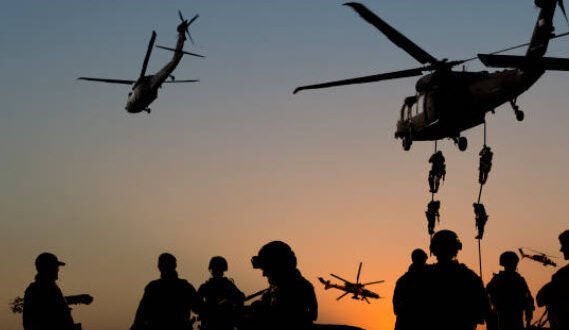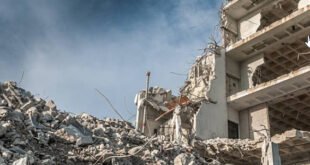Date: September 25, 2024
Location: Beirut, Lebanon
Hezbollah, the Lebanese Shiite militant group, has been a significant player in Middle Eastern geopolitics since its formation in the early 1980s. Originally established to resist the Israeli invasion of Lebanon, Hezbollah has evolved into a formidable military and political organization. Its arsenal has grown to include a wide range of weaponry, making it one of the most powerful non-state actors in the region. This article explores the various categories of weapons Hezbollah possesses, their origins, and their implications for regional security.
Historical Context
Hezbollah emerged during the Lebanese Civil War and quickly gained popularity for its resistance against Israel. The group has received substantial military support from Iran and Syria, enabling it to develop a diverse arsenal. This support has included training, financial aid, and access to advanced weaponry, reflecting the broader regional power struggle involving Iran, Israel, and the United States.
Categories of Weapons
Hezbollah’s arsenal can be broadly categorized into the following categories:
- Small Arms and Light Weapons
- Assault Rifles: Hezbollah is known to possess a variety of assault rifles, including the AK-47, which is widely used among its fighters. The AK-47’s durability and reliability in combat situations make it a favored choice.
- Sniper Rifles: The group also uses sniper rifles, such as the Dragunov, which are effective for long-range engagements.
- Anti-Tank Weapons
- ATGMs (Anti-Tank Guided Missiles): Hezbollah has gained notoriety for its use of advanced anti-tank guided missiles, particularly the Kornet and TOW missiles. These weapons have proven effective against Israeli armored vehicles during conflicts, significantly altering the battlefield dynamics.
- RPGs (Rocket-Propelled Grenades): The group employs various RPGs, including the RPG-7, which can be used against both armored and soft targets.
- Artillery and Mortars
- Mortars: Hezbollah is equipped with mortars ranging from 60mm to 120mm, allowing it to deliver indirect fire support on enemy positions.
- Self-Propelled Artillery: Reports suggest that Hezbollah may have access to self-propelled artillery systems, enhancing its capability for sustained bombardment.
- Rockets and Missiles
- Short-Range Rockets: Hezbollah has a substantial stockpile of short-range rockets, such as the Katyusha, capable of hitting targets within Israel. These rockets can cause significant damage and disruption, especially in civilian areas.
- Long-Range Missiles: The group has reportedly acquired long-range missiles, including Iranian-made Fateh-110 and Zolfaghar missiles, which can reach deep into Israeli territory. The accuracy and range of these missiles pose a serious threat to strategic targets.
- Drones
- Unmanned Aerial Vehicles (UAVs): Hezbollah has increasingly integrated drones into its military operations. These UAVs are used for reconnaissance and intelligence gathering, as well as for conducting strikes on enemy positions. The group has claimed to possess armed drones capable of carrying out attacks.
- Surface-to-Air Missiles
- Man-Portable Air Defense Systems (MANPADS): Hezbollah has reportedly received MANPADS, such as the Igla and Strela systems, from Iran. These shoulder-fired missiles pose a threat to Israeli aircraft operating in the region.
- Chemical and Biological Weapons
- Allegations of Chemical Weapons: While there is limited concrete evidence, some analysts suggest that Hezbollah may have access to chemical weapons, potentially supplied by Iran. The implications of such capabilities raise significant concerns for regional security.
Origin and Supply Chain
Hezbollah’s weaponry primarily comes from two main sources: Iran and Syria. Iran has been instrumental in providing military support to Hezbollah, viewing the group as a critical ally in its efforts to extend its influence in the region. The Iranian Revolutionary Guard Corps (IRGC) has played a significant role in training Hezbollah fighters and supplying advanced weaponry.
Syria has also been a key conduit for transferring weapons to Hezbollah, particularly during the Syrian Civil War. As the conflict in Syria evolved, Hezbollah fighters have gained battlefield experience, further enhancing their military capabilities.
Strategic Implications
The vast arsenal possessed by Hezbollah has significant implications for regional security and stability. The group’s ability to inflict substantial damage on Israeli forces has altered the strategic calculus for both Israel and its allies. Israeli officials have expressed concerns over Hezbollah’s growing military capabilities, leading to increased military readiness and preventive measures along the Lebanese border.
The potential for conflict escalation remains high, particularly in the context of ongoing tensions between Israel and Iran. Hezbollah’s access to advanced weaponry heightens the risks of miscalculation and unintended confrontation in an already volatile region.
International Responses
In response to Hezbollah’s military capabilities, the international community has taken various measures. The United States has imposed sanctions on individuals and entities supporting Hezbollah, aiming to disrupt its financing and supply chains. Additionally, the U.S. has increased military assistance to Israel, ensuring that it maintains a qualitative military edge in the region.
Furthermore, the United Nations has expressed concerns regarding Hezbollah’s arsenal, urging member states to work towards disarming non-state actors and promoting regional stability. However, the effectiveness of such measures remains uncertain.
Conclusion
Hezbollah’s extensive arsenal of weapons, coupled with its strategic partnerships, makes it a formidable force in the Middle East. As tensions continue to rise, understanding the nature and scope of Hezbollah’s military capabilities is essential for comprehending the complexities of regional security dynamics. The interplay of local, regional, and international factors will ultimately shape the future trajectory of Hezbollah and its role in ongoing conflicts in the region.
As the situation evolves, the international community must remain vigilant in addressing the challenges posed by Hezbollah’s military strength and the broader implications for peace and stability in the Middle East. The quest for a lasting resolution to the conflicts in the region will require concerted diplomatic efforts and a commitment to addressing the underlying issues fueling violence and instability.
 Smart World Leading conservative magazine covering news, politics, current events, and culture with in-depth analysis and commentary
Smart World Leading conservative magazine covering news, politics, current events, and culture with in-depth analysis and commentary

